International Projects
Plincke has a proven track record of international work in locations including mainland Europe, North America, the Middle East, and Central and South Asia. Our projects include large-scale master planning for new, sustainable cities, green-blue infrastructure, and cultural asset management for heritage sites. Our teams bring considerable experience in well-researched and inspiring solutions, which are sensitive to people, place, culture, and environment.
Fuyang Cultural District, China
Fuyang is a city in north-western Anhui province, famous for its mountainous landscapes and ancient calligraphy. Plincke were appointed as lead landscape architects and environmental planners for the £800 million city expansion with the creation of a new cultural district. The masterplan included a mixed-use development combining residential, business, artists’ studios, primary school, hotel, and a major new cultural centre. Plincke developed the scheme based on three-character zones: urban edge, a transition zone, and a forest area that steps up the steep terrain. Each zone has a bespoke range of materials based on the ancient art of paper folding and cutting to create a strong sense of place and identity. A site-wide arts strategy was also developed, linked to the new cultural centre.
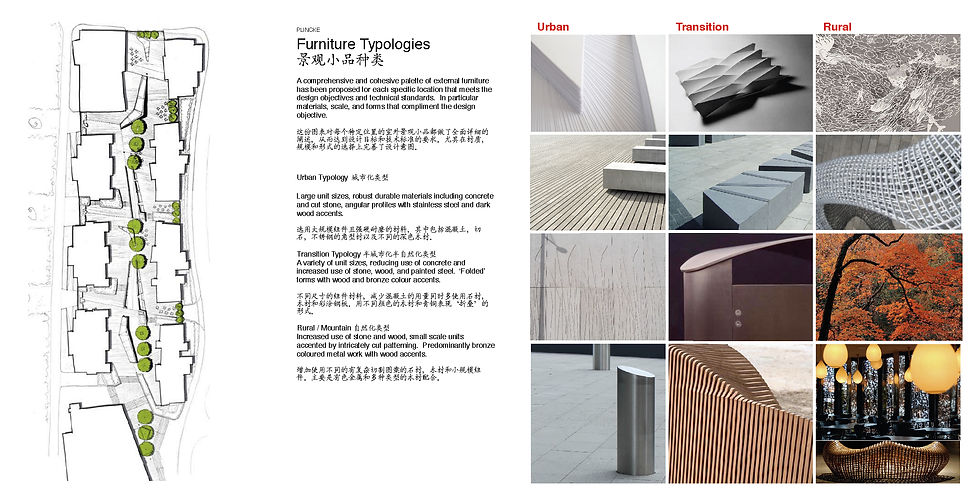
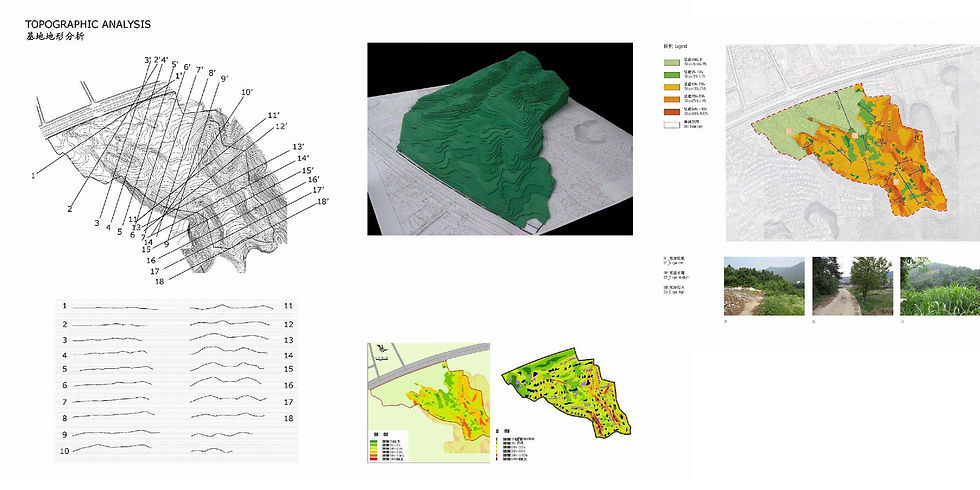

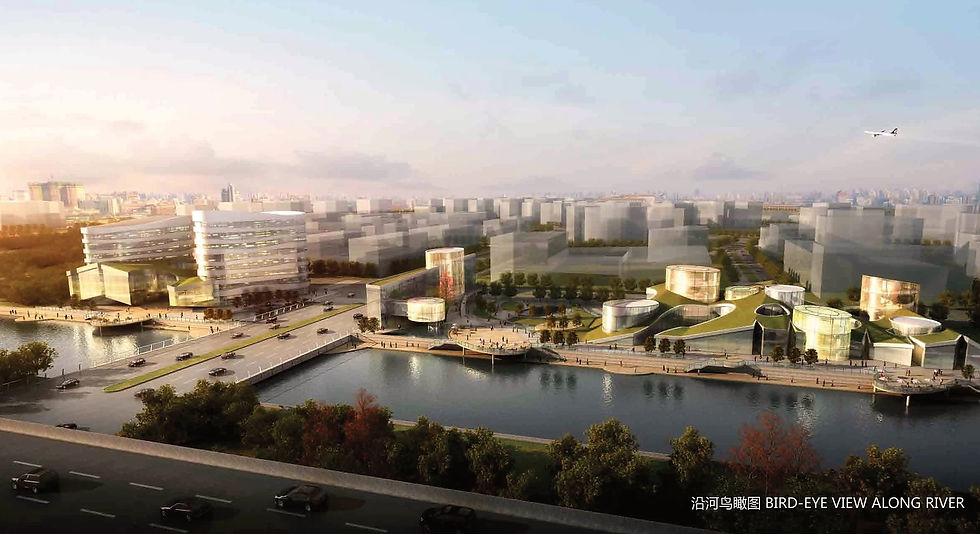

Hongqiao Sustainable Business District, Shanghai, China
Plincke worked alongside the Swiss based master-planning team at Nature Lab to develop the competition winning entry for a key regeneration site on the Shanghai Canal. The project is part of an overall masterplan involving architects including Zaha Hadid and Foster + Partners to create Asian’s most sustainable business district. Plincke / Nature Lab developed two concepts for the site. Idea 1 is based on a series of overlapping lotus leaves that provide a protective, biophilic membrane over the building forms to ameliorate the site and encourage year-round outdoor activities. Idea 2 looks at natural processes of erosion to create a variety of forms. New riverside paths promote walking and cycling routes as part of a green infrastructure network.
Moscow Private Airport, Russia
The project redresses the diminished and stressed filled experience of air travel by reconnecting the pre-flight journey and vehicular arrival with the emotion attached to flight. A sequence of landscaped spaces, including an increasingly dense forest acts as a decompression of urban stress. Emerging from the forest, the landscape signifiers collectively reference the experience of flight. A continuum of surface and line, in a landscape of expansive distance. The artificial horizon created by the ground plane is constantly changing with the seasons, snow to meadow, to lawn, to ice, the constant is the line of travel. The strong tree forms help anchor the site to its surroundings, and to the seasons.




Gardens of the World, Berlin
Plincke were invited to prepare a design for ‘The English Garden’. We took its form from the walled enclosures of English kitchen gardens where fruit, vegetables and cut flowers would
be grown. The partial enclosure also references the hortus conclusus, the enclosed garden, an archetypal form applicable to ancient garden culture from the Far East to the medieval
European tradition. The garden is divided using the golden ratio of proportion and a central axis results in four character zones or compartments reflecting the traditional design seen in many English gardens such as Sissinghurst and Hidcote Manor. A new cafe and visitor centre borrows its language from English vernacular.
Oxygen Dubai UAE
‘Oxygen’ is the latest sustainable resort in Dubai to attract international attention and investment. The project, by developer Damac focuses on a new way of living, creating a sustainably managed natural system linked to environmental processes such as water conservation and on-site energy creation. Centred around a championship golf course the development comprises a mixed-use masterplan of retail, residential, leisure, and hotel facilities. Plincke won the commission as concept landscape architects and environmental planners via an invited competition. We were selected to develop the concept on the basis of our experience of holistic largescale, green-blue infrastructure solutions to maximise the sustainability of complex, urban development.
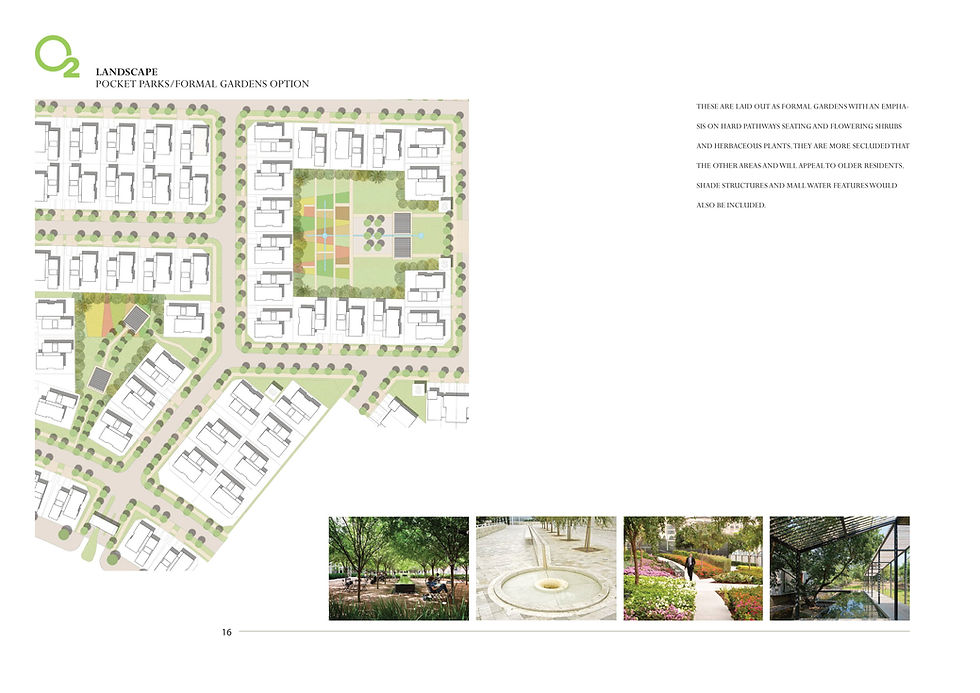

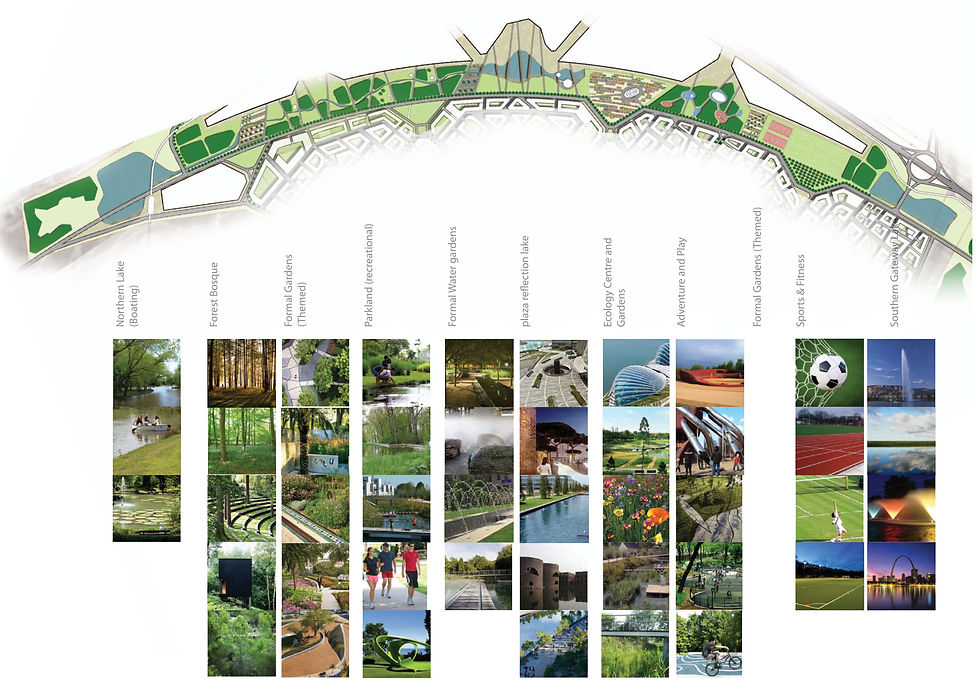

Hosvan Green City Concept, Baku, Azerbaijan
As part of an international competition, Plincke worked with the Berlin studio of EWA Architects to create a new sustainable city masterplan in Baku, the Capital and largest city of Azerbaijan. As lead landscape architects and environmental planners, we developed the green-blue infrastructure solution for the commercial and residential new town. We explored a green-livable city concept, that could be applied to this site but also set a development exemplar for the wider region, based upon environmental repair and enhancement to provide a sustainable and commercially viable strategy to tackle the regions environmental degradation.
One Montin Place, Baku, Azerbaijan
Plincke formed part of the winning design team with the ADP Architects for an urban regeneration masterplan comprising 4-statement apartment towers and extensive new public realm and residents pocket parks and gardens. Located immediately opposite the spectacular Congress Centre and the iconic Heydar Aliyev Centre, which are the focal points of the cultural quarter for the city. Plincke’s proposal addressed the environmental harness of the region’s strong sand laden winds with a series of colonnades with integrated screens that filter out the wind and sand. The solution creates a distinct micro-climate that facilitates outdoor living and encourages a sense of place and community.
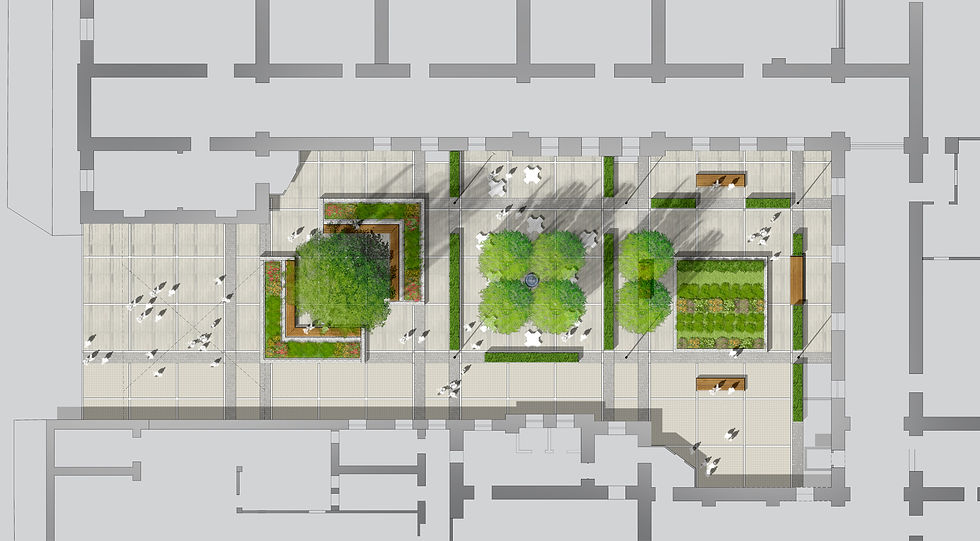




Angkor Wat Temple Complex, Cambodia
As part of an international competition, Plincke worked with the Berlin studio of EWA Architects to create a new sustainable city masterplan in Baku, the Capital and largest city of Azerbaijan. As lead landscape architects and environmental planners, we developed the green-blue infrastructure solution for the commercial and residential new town. We explored a green-livable city concept, that could be applied to this site but also set a development exemplar for the wider region, based upon environmental repair and enhancement to provide a sustainable and commercially viable strategy to tackle the regions environmental degradation.
‘Emporium’, Lahore, Pakistan
The Emporium is a retail and leisure complex with shops, casual and fine dining, an ice skating rink, a cinema and hotel. It occupies the site of the former international Lahore Expo and is part of an overall regeneration masterplan. Plincke were appointed as landscape architects and environmental planners for the Emporium from initial concept ideas through to detailed design and advice during construction. The development sits on a raised plinth, surrounded by a series of water canals. These both help to ameliorate local environmental conditions but also address security concerns by preventing ram-raiding and channelling all visitors through security-controlled access points. A variety of external spaces draws upon the region's rich landscape traditions.

